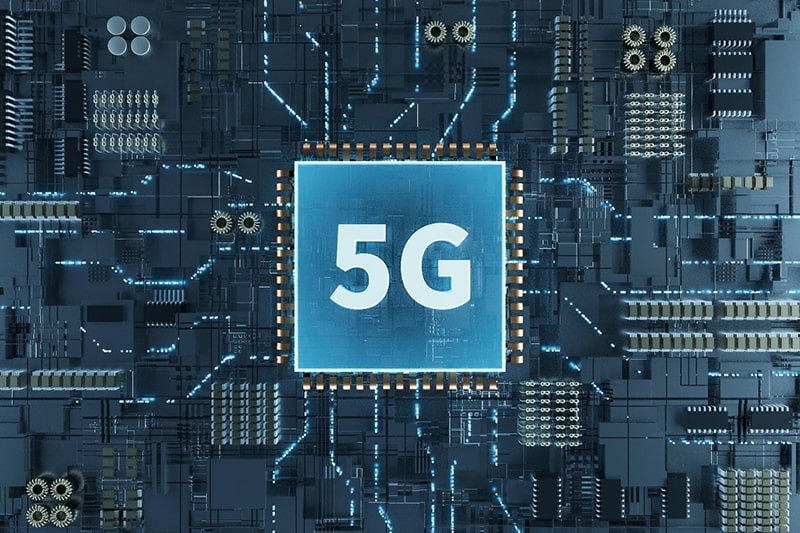
At present, the industry has high hopes for new infrastructures represented by 5G, artificial intelligence, industrial Internet, Internet of Things, data centers, etc. Optical fiber access network, as an important infrastructure for the transformation of the digital economy, is ushering in major development opportunities.
Since the beginning of 2020, China Unicom has completed the largest collection of PON equipment in recent years. According to media reports, all the collection equipment is 10G PON. And in the past 2019, China’s three major operators have completed a number of 10G PON central office or terminal equipment collection.
Omdia recently released the latest PON equipment market forecast report. There are two very interesting forecast data, one is that the future compound annual growth rate of 10G GPON will reach 62%, and the other is that the OLT port shipment data of 10G GPON will exceed 10G EPON for the first time in 2020. As you know, the main shipments of 10G EPON are concentrated in a few countries such as China and Japan. The fiber access of other countries chooses the GPON route. The small change of these two numbers means a major change. The leading wave of 10G PON construction has swept the world and has formed the trend of Ebara. The era of 10G PON development is coming.
 1.10G PON vs. GPON
1.10G PON vs. GPON
10G PON is coming. The biggest reason is that 10G PON provides more benefits than GPON.
(1) Higher bandwidth: Compared with GPON, the downstream bandwidth of 10G PON is increased by 4 times, and the upstream bandwidth is increased by 2 times. It only takes 40 seconds to download a Blu-ray movie! Greater bandwidth means that it can be listed in the traditional home broadband market. Attractive package to get higher ARPU, which is the most direct visible benefit. For 2B scenarios that require symmetric broadband, a symmetrical 10G PON can be deployed to support up to 4 times the relative GPON bandwidth.
(2) Lower latency: There are already some innovative technologies in the industry that can further reduce the latency of OLT / ONU to the microsecond level, meet the demanding requirements of special enterprise leased lines, and guarantee SLA.
(3) Higher cost performance: Because there is no need to modify the ODN network, the 10G PON upgrade only needs to replace the central office OLT equipment and the terminal ONT equipment. At the same time, after the bandwidth is increased, especially supporting symmetrical bandwidth can expand more application scenarios and increase revenue.

(4) Simple operation and maintenance: 10G PON technology has not changed much from GPON in operation and maintenance. Service provisioning, equipment configuration, and network management are consistent with the previous ones, so it will not cause an increase in operation and maintenance workload, and labor costs can be maintained.
There is no doubt that under the premise that the ODN network has been basically covered, technical analysis shows that upgrading 10G PON can achieve greater benefits.
2.10G PON industry chain is very mature, supporting large-scale deployment
(1) OLT platform architecture supports large-scale deployment: As the core node of the access network, the OLT architecture directly affects the bandwidth and performance of the network, so it must have a good architecture to support it. When upgrading to the 10G PON era, the traffic will increase by more than tens of times. The OLT needs to deal with the digital torrents. The traditional centralized forwarding architecture, the cost and power consumption of the core forwarding chip cannot meet the requirements. By decentralizing business processing to each business board, the system no longer has a bottleneck, which greatly improves the system’s switching capacity and performance, and also greatly improves reliability.

(2). 10G PON evolution solution is mature: In the case of a large number of GPON / EPON online devices on the existing network, it is impossible to switch to 10G PON all at once. Although 10G PON is not directly compatible with GPON from the standard, major equipment manufacturers have launched related end-to-end 10G PON solutions such as chips, equipment, optical modules, and terminals to support network construction and simplify engineering upgrades through a series of innovative solutions.
(3). Complete optical module series: The operation of optical fiber network, the problem of optical power must not be ignored. As an important part of the FTTH network, the stock of the existing network ODN network is already very large. Due to the many types of ODN devices, low technical thresholds, uneven suppliers, and difficult to guarantee quality, coupled with the complex environment, construction links and methods Due to many reasons, the operation is not standardized, etc., ODN network problems have gradually become apparent over time, leading to instability on the line or frequent disconnections and other issues that cause user complaints.
According to statistical analysis, 85% of ODN problems are related to optical power, which can be solved by increasing the transmitted optical power. At present, various manufacturers in the industry have standardized Class B + / C + optical modules to meet most scenarios. For higher-demand scenarios, the industry also has a higher-spec Class D optical module. Compared to C + optical modules, it improves the transmit optical power and receiving sensitivity by 3dB at the same time. The common splitting ratio in the existing network is 1:64. Next, Class D can reach 20Km, and the increase rate is as high as 60%. According to the attenuation data of the fiber link of the existing network, the optical power budget of the Class D optical module can cover more than 97% of the attenuation of the fiber link. In summary, these advantages can greatly improve the flexibility of network planning and adapt to the needs of more scenarios.
3.10G PON upgrade business logic: small investment, big return
In the GPON era, because the ODN basic network construction is involved, the investment is relatively large, but ODN can keep the existing network unchanged for 30 years. When upgrading to 10G PON, you only need to replace the OLT / ONT equipment as needed, and the investment only needs about 50% of the original GPON network investment compared to wireless, the investment is only about 10%.
The Gigabit fiber network supported by 10G PON can bring great value to operators and society from three aspects:
(1) Fixed-mobile convergence reduces users’ network transfer and protects 5G investment.
China’s overall wired broadband and wireless broadband are well developed, and integration packages are a common business. According to the typical package design, generally one home wide user is bound to two mobile phone users, and the total number of FMC users is as high as 100 million.

(2) Rich application scenarios and diverse business models. 10G PON can support the deployment of Gigabit packages. Even on the basis of meeting the speed-up and fee-reduction requirements, the ARPU of home users can be increased by more than 50%. At the same time, 10G PON can support the expansion of higher-value enterprise leased lines and parks and other services. Generally, it can support network revenue more than doubled, and significantly reduce ROI cycle.
(3) Promote the development of the digital economy. On February 25th, the European Telecommunications Standards Institute (ETSI) formally established the fifth-generation fixed network (F5G) working group, with the goal of continuing the 3GPP’s role in promoting mobile networks and accelerating the process of fiber-to-the-home to fiber optics. F5G construction with 10G PON as the core will create huge direct and indirect economic benefits and improve national economic productivity.
Now Huawei has released its new 10G PON ONT with WiFi-6, the OptixStar V864 and OptixStar V854. We believe that 10G PON has come!

Do you agree? Leave your comment now.
Related Topics:
PON: EPON vs. GPON vs. 10G-PON
Optical Access Network Case Design for Commercial and Residential
What is the difference between ADSL and FTTH?
FTTx Solution: What is the difference between ONU and ONT?
More Technology Overviews:
Development of Optical Access Network Technology
More Study Solutions:
GPON 10GPON Evolution Solution




